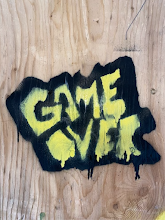 Since first holding a camera, I have been attracted to industrial architecture. There is something engaging about the purpose built structure; especially once it no longer suits the purpose for which it was built. The Fish Plant project is the second long-term project I embark on to look closely at these sites, and by look closely I mean to be amongst them and experience their presence and the history that echoes in the particular light and shadow they express.
Since first holding a camera, I have been attracted to industrial architecture. There is something engaging about the purpose built structure; especially once it no longer suits the purpose for which it was built. The Fish Plant project is the second long-term project I embark on to look closely at these sites, and by look closely I mean to be amongst them and experience their presence and the history that echoes in the particular light and shadow they express.That they were once used for something is extremely important; what they were used for is mostly a question of context or an excuse for an editing strategy. The politics of the abandoned building end up being implicit in the photographs; once a viewer knows what the building was used for and is confronted with the reality of its present state a reflective process on industrial social complexes inevitably comes about.
With the Fish Plant project I am thinking a lot about how these buildings, spread about the coastline, reflect their use/misuse as well as the identities of the communities that surround them. It is my hope that by presenting images of various sites in a unified context will invite a viewer to see a larger picture of how the fishing industry has been part of shaping a sense of place in coastal communities.


No comments:
Post a Comment